Why Media & Entertainment Brands In Southeast Asia Need Behavior-based Communication Today
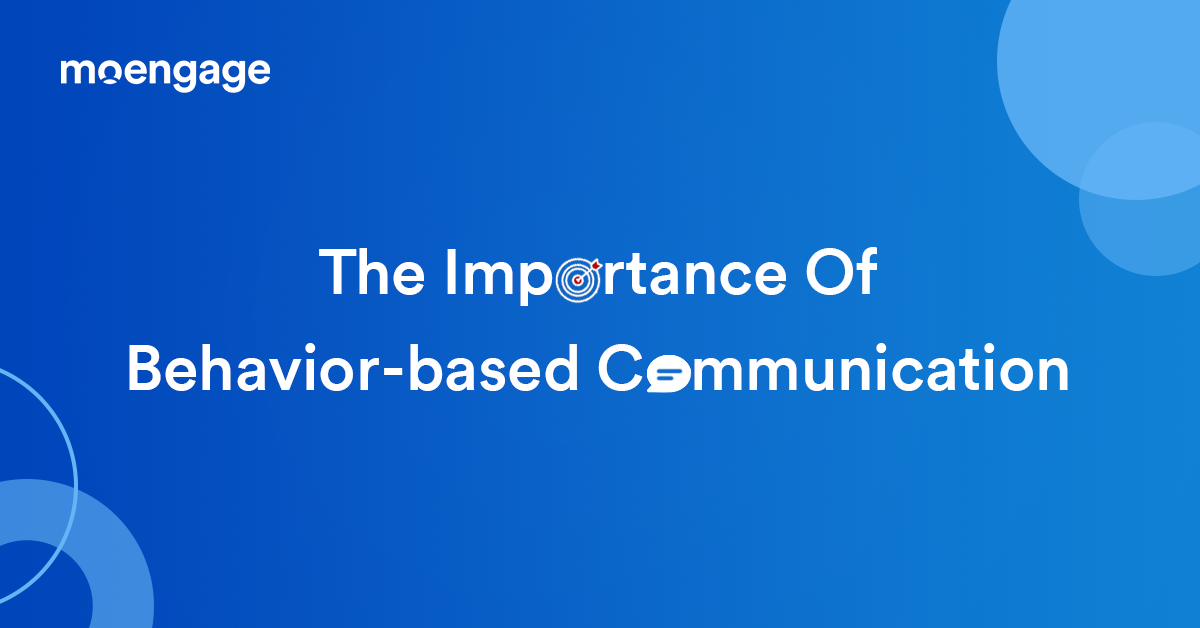
Reading Time: 7 minutes
The COVID-19 pandemic was the biggest driver of rapid digital adoption by consumers across Southeast Asia, much of which is here to stay. Observing this trend, businesses across industries, particularly the Digital Entertainment (OTT), Gaming, and Telecommunications space, have placed customer-centricity at the forefront of their business communication for the year 2022.
The key to unlocking the true state of customer-centricity lies in relevant communication that adds value to your customers. Unlike ‘spray and pray,’ a data-driven and intelligent approach to Customer Engagement accelerates growth in key business areas like Retention and Monetization. Insights-led Engagement leads to more returning customers, higher customer lifetime value, and increased repeated transactions – all of which translate to consistent YoY business growth.

In an attempt to understand how digital consumers in Southeast Asia interact with Digital Entertainment (OTT) brands, we studied over 6.6 million customers from Southeast Asia – primarily from Indonesia, Singapore, Malaysia, the Philippines, Thailand, and Vietnam.
We’ve also gathered Customer Engagement tips and strategies from some of the top consumer brands in the Digital Entertainment space in Southeast Asia. Since more and more brands in the Telecommunication vertical are introducing OTT streaming services on their mobile apps and website as a part of their offerings, knowing the shift in media consumption and benchmarks from the Digital Entertainment sector will be of utmost importance to them in the coming year.
In this article, you’ll learn the importance of behavior-based communication in the Digital Entertainment industry.
👉 You can read the full Customer Engagement Benchmarks Report 2021, Southeast Asia here.
Digital Entertainment Trends, 2022
In 2020, over 40 million people in six countries across Southeast Asia – Indonesia, Singapore, Malaysia, the Philippines, Thailand, and Vietnam, came online for the first time (source).
This pushed the total number of internet users in these countries to 400 million (that’s about 70% of the population). With an overall increase of 11% in online users, Southeast Asia has become one of the world’s fastest-growing internet markets containing, arguably, the largest number of digitally engaged customers.
In Southeast Asia, the number of Daily Active Users of Audio streaming, Video streaming, Gaming, Sports, and News brands has increased by 61.70% from January 2021. There’s been an increase of 73.42% in DAUs on Android devices and a 47.80% increase in DAUs on iOS devices. The number of Website DAUs of the brands in this sector has increased by 60.24%.
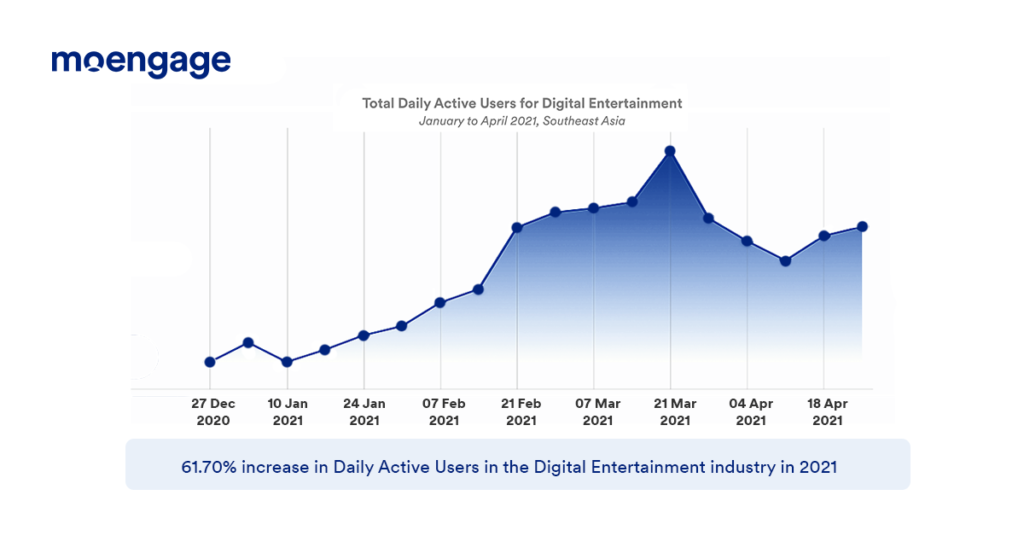
When studying the number of Monthly Active Users of the same brands from January to April 2021, we observed an overall increase of 80.55%. Android devices saw an increase of 26.15% in MAUs while there was an increase of 14.15% in MAUs on iOS devices. The largest overall jump was observed in website MAUs (163.25%), taking the total number of MAUs ahead of both Android and iOS devices.
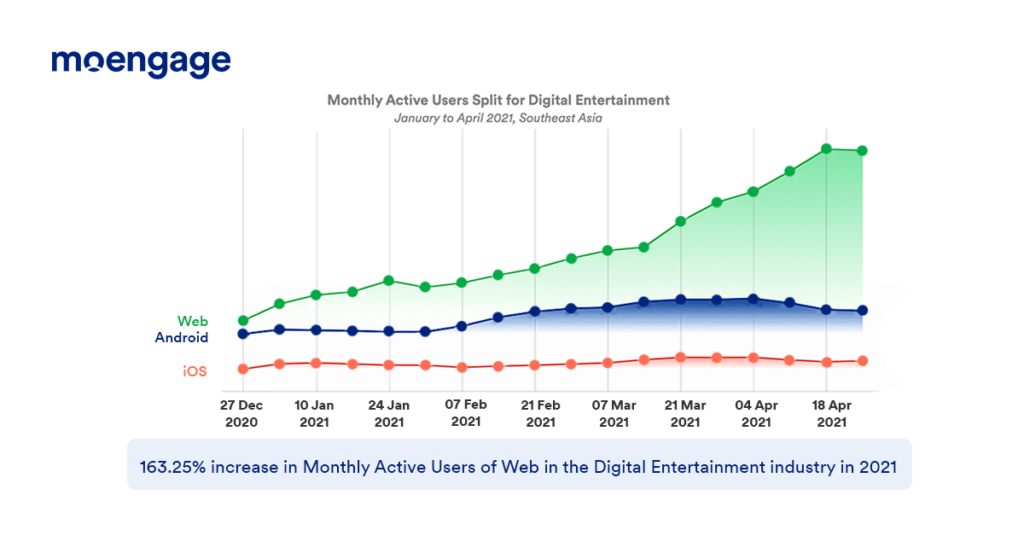
Customer Engagement Benchmarks for Media & Entertainment, 2022
| “The starting point for crafting a brilliant omnichannel experience is by making customer-centricity the DNA of the organization. If everyone thinks for the consumers, then this sensitivity will itself come into the process. The cornerstone of all of this is to build a very strong customer data platform.
Two things are important for a smooth experience:
Check the messaging language in terms of creatives and communication. The pillars of building a good customer experience remain the same even when we are building differentiated communication strategies. One should be where the customer is. Segmenting your customers is a good starting point to ensure behavior-based communication. Seeing how many users are coming from a particular genre or language, and do you have enough from there helps create data to input into your engagement strategy.” – Vani Dixit, Head of Customer Management, Zee5 |
Push notification benchmarks and metrics, 2022
- Delivery Rate: 60.14%
- Click-through Rate: 4.82%
- Conversion Rate: 23.21%
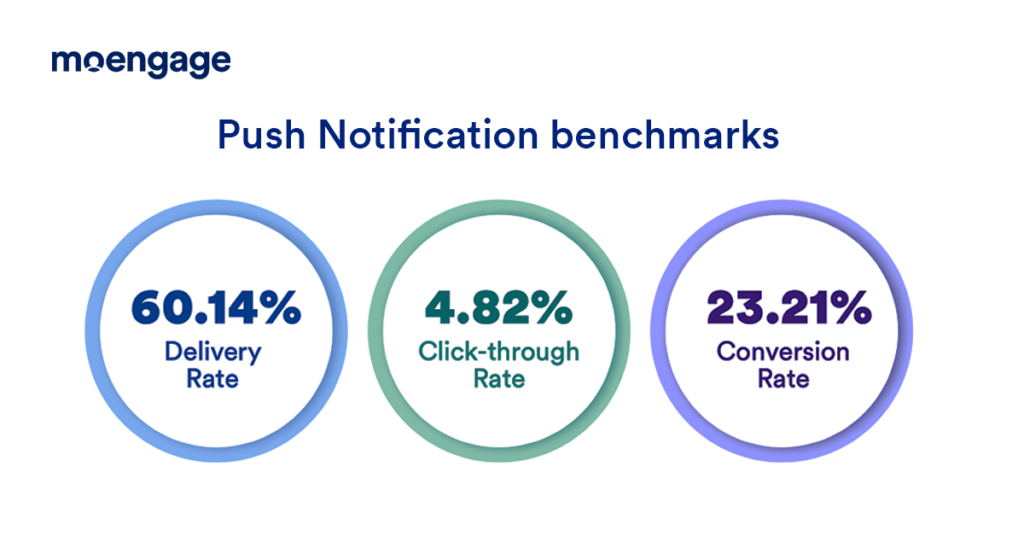
Digital consumers in Southeast Asia react much more positively to the communication sent based on their app behavior.
The CTRs of Behavior-based push notifications increase to up to 10.32% and deliverability reaches as high as 70.19% as compared to generic broadcasts. When a layer of personalization complements these Push Notifications, CTRs reach up to 14.92%, and delivery rates reach as high as 94.02%.
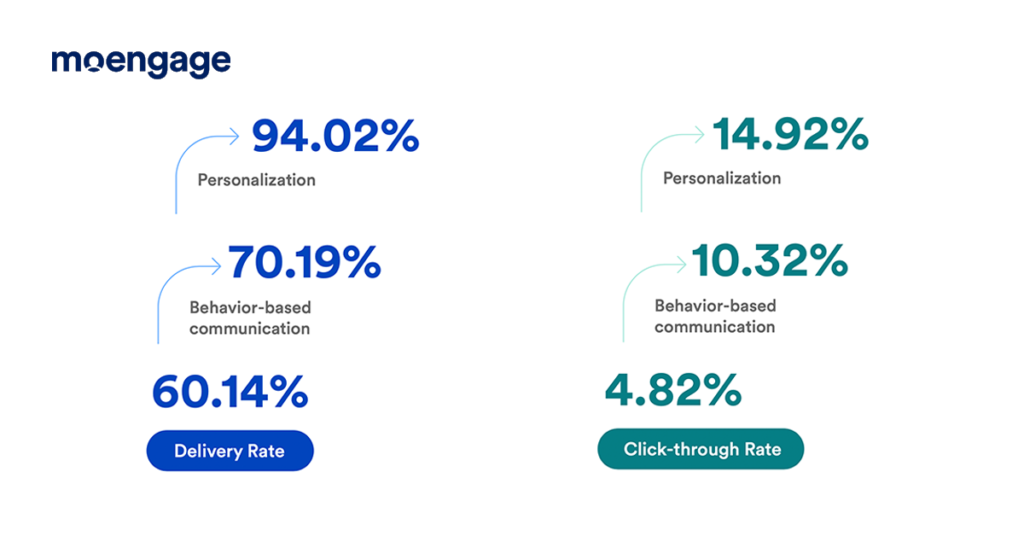
How can teams in Digital Entertainment brands align to deliver behavior-based communication?“As next-gen marketers, it’s our job to drive the business by understanding the next ‘trigger’ that’s informed by data. This also helps acquaint customers with that ‘unknown new’ to enable lasting business growth. Organizations tend to define their success metrics in silos for different departments rather than look at it as a common success metric; one which can then cascade into individual departments. Having a common metric can help minimize the gap. This can be done by aligning our organization’s goals to department goals with respect to marketing, product, or customer service. Doing this creates a certain level of competencies between the department in terms of defining the clarity and understanding key responsibility towards the goals. When you map those success metrics to department success metrics, you create a harmonious, well-oiled business where everyone is aligned and works towards shared goals, and maximizing revenue. In short, the three P’s – People, Process, and Product should be in complete harmony.” – Sarika Tulsyan, Chief Revenue Officer at POPS Worldwide |
Segmentation is key to behavior-based communication
Brands in the Digital Entertainment (OTT) vertical have witnessed an improvement in campaign performance by implementing advanced segmentation strategies and customizing communication for each customer segment. Segmented Push Notifications see delivery rates as high as 63.38% and CTRs as high as 5.40%. We also observed that when communication is customized as per the customer lifecycle and the buyer journey, conversion rates increase to up to 23.90% on Android devices, and CTRs reach as high as 7.88% on iOS devices.
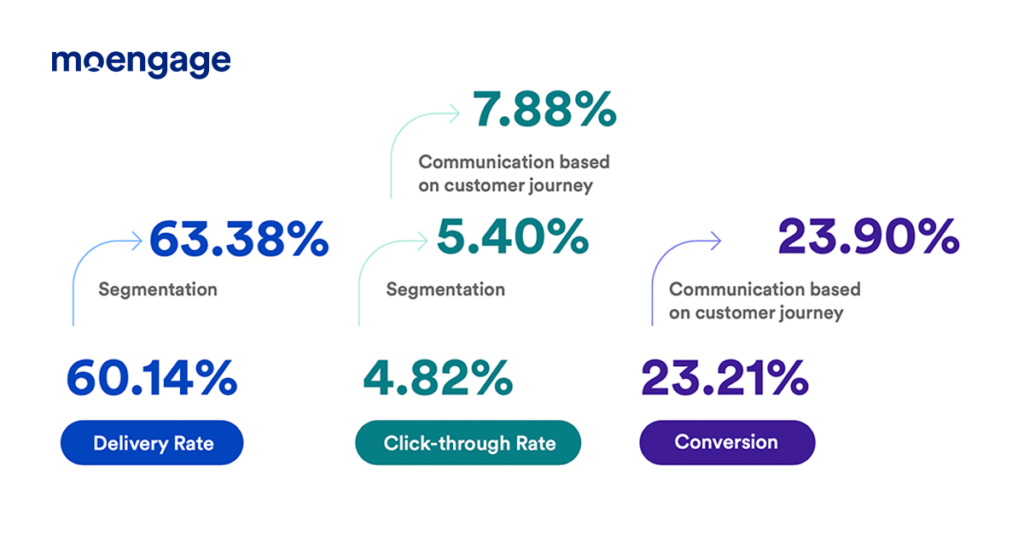
Email benchmarks and metrics, 2022
- Delivery Rate: 97.75%
- Open Rate: 18.64%
- Click-through Rate: 0.54%
- Total Click-to-Open Rate: 2.89%
- Unique Click-to-Open Rate: 9.43%
- Conversion Rate: 6.87%
- Unsubscription Rate: 13.87%
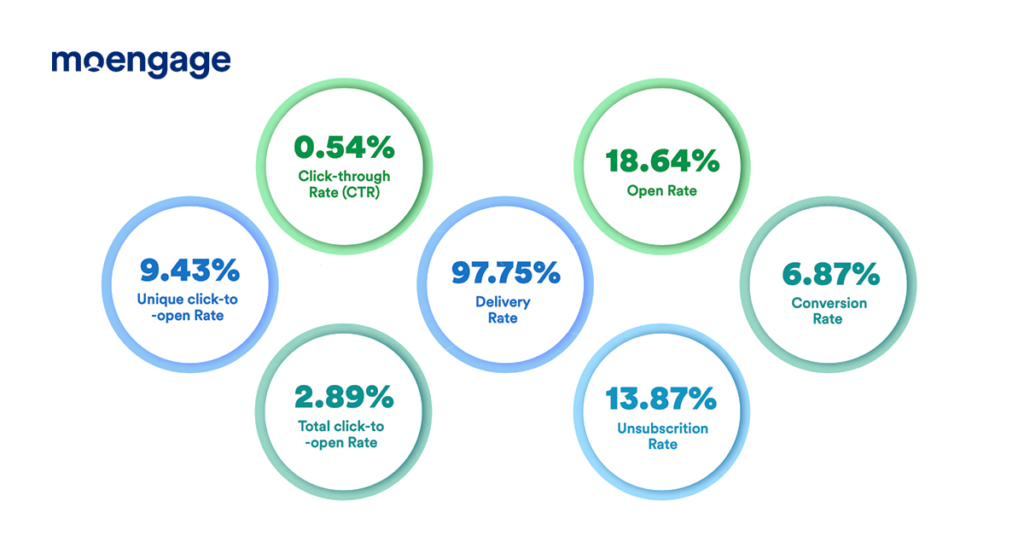
When email campaigns are built around user behavior and behavior-based communication is sent out, it resonates better with digital consumers in Southeast Asia. They find such emails relevant and less spammy.
We observed that email personalization led to open rates being as high as 49.67%, click-to-open rates reaching up to 5.71%, CTRs going as high as 2.83%, and conversions increasing to more than 30.72%.
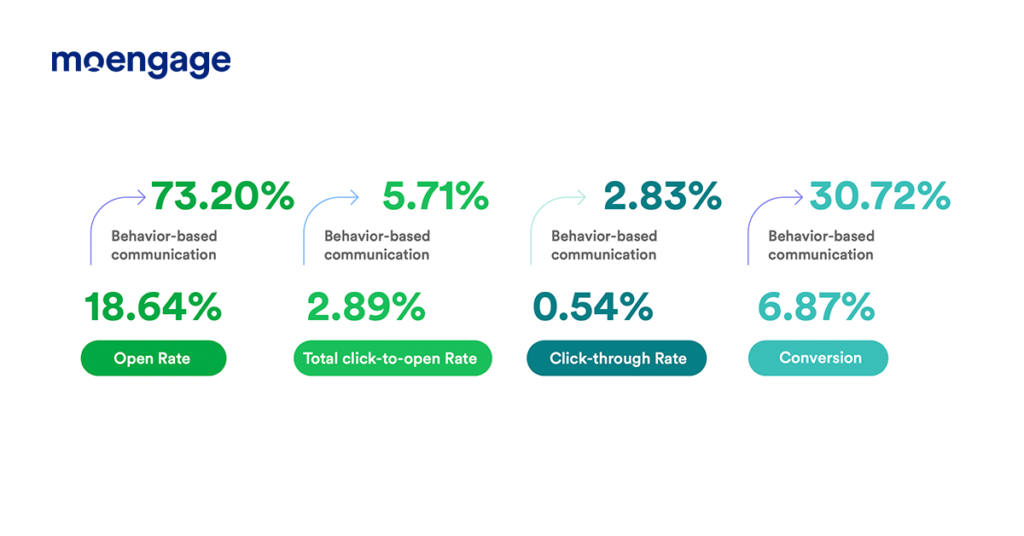
Consider content consumption behavior to send business communication“Since we are in the media industry, we cater to different target audiences, and our segmentation tactics differ for each audience type. At KG media, we have three groups: the fly-by, the moderate, and the loyal. We look into the content consumption behavior and truly understand what kind of content will resonate with them the most. The goal is to shift the fly-by into moderate and moderate to loyal because the loyal customer gives you more revenue. For advertisers, we are more passive and surf to understand what the advertiser needs by looking at the basic demography, consumption behavior, and purchase intent segmentation.” – Dian Gemiano, CMO at Kompas Gramedia |
In-app messaging benchmarks and metrics, 2022
- Click-through Rates, Android: 34.59%
- Conversion Rates, Android: 20.89%
- Click-through Rates, iOS: 18.86%
- Conversion Rates, iOS: 19.73%
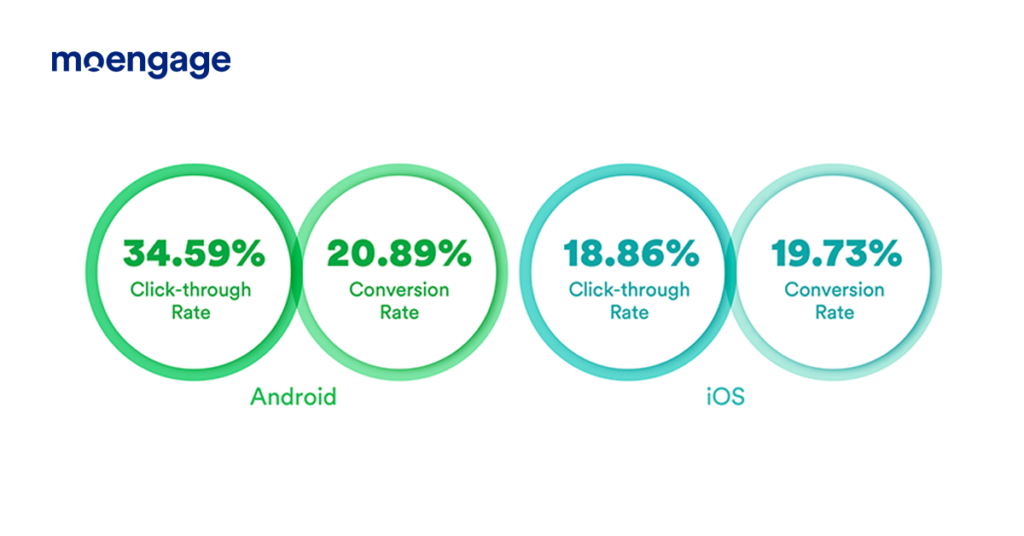
When in-app messages based on user behavior on the mobile app are sent to digital consumers, they find the communication valuable. They are more likely to interact with behavior-based communication and take the desired action, which can be seen by higher CTRs on Android (56%) and iOS (29.41%) devices, and higher conversions on Android (21.81%) and iOS devices (28.16%).
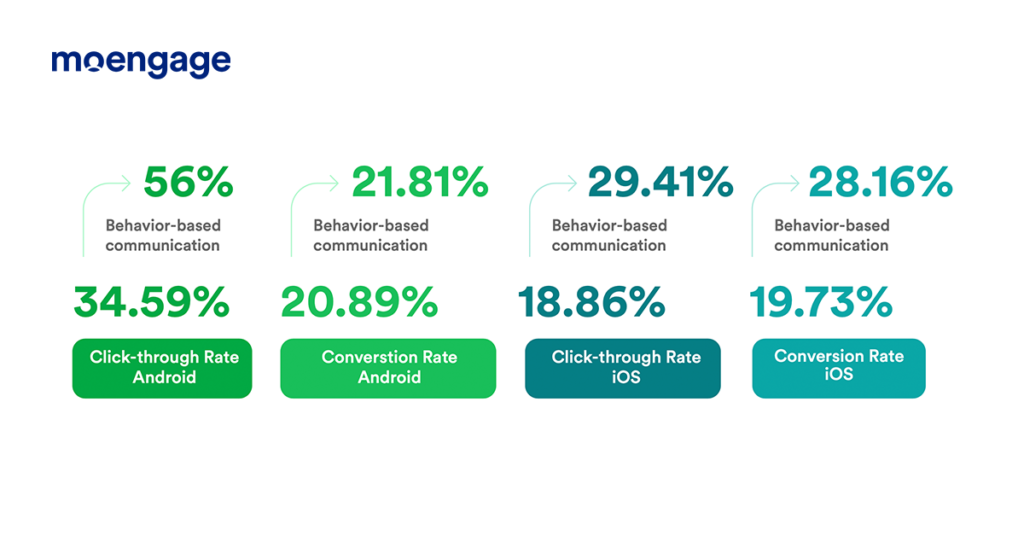
Website message benchmarks and metrics, 2022
- Pop-up Click-through Rate: 6.54%
Seeing how the number of DAUs on Digital Entertainment websites has increased in Southeast Asia in 2021, consumers are reacting positively to website pop-up messages, with CTRs reaching as high as 6.54%.
| “Better engagement will only be possible when a brand starts seeing things from a different perspective and approaches them differently. Being customer-centric is necessary to maintain and grow brand engagement.
Customers should never be taken for granted. This might lead to consumers moving away from your platform a lot faster. One should get back to the drawing board, keep a close ear on the ground and start listening to what their viewers want. Only then the generated engagement can be retained. The definition of engagement and retention is changing. Brands must study how they are perceived to understand what the consumers think of them. The results from this kind of study can be used to make better campaigns and keep up with the change.” – Abhishek Joshi, Head of Marketing, MXPlayer |
Conclusion: Behavior-based communication is key to sustainable growth
Our study shows that the only way your consumer brand can move forward in 2022 is to crack customer-centricity by using behavior-based communication that is relevant to your customers and adds value to them.
More and more digital consumers in Southeast Asia expect brands to deliver relevant content recommendations, timely reminders, and valuable offers right to their fingertips. To meet this demand, consumer brands need a data-driven approach to Customer Engagement – an insights-led approach.
Here are some interesting reads that will help you with this approach:








